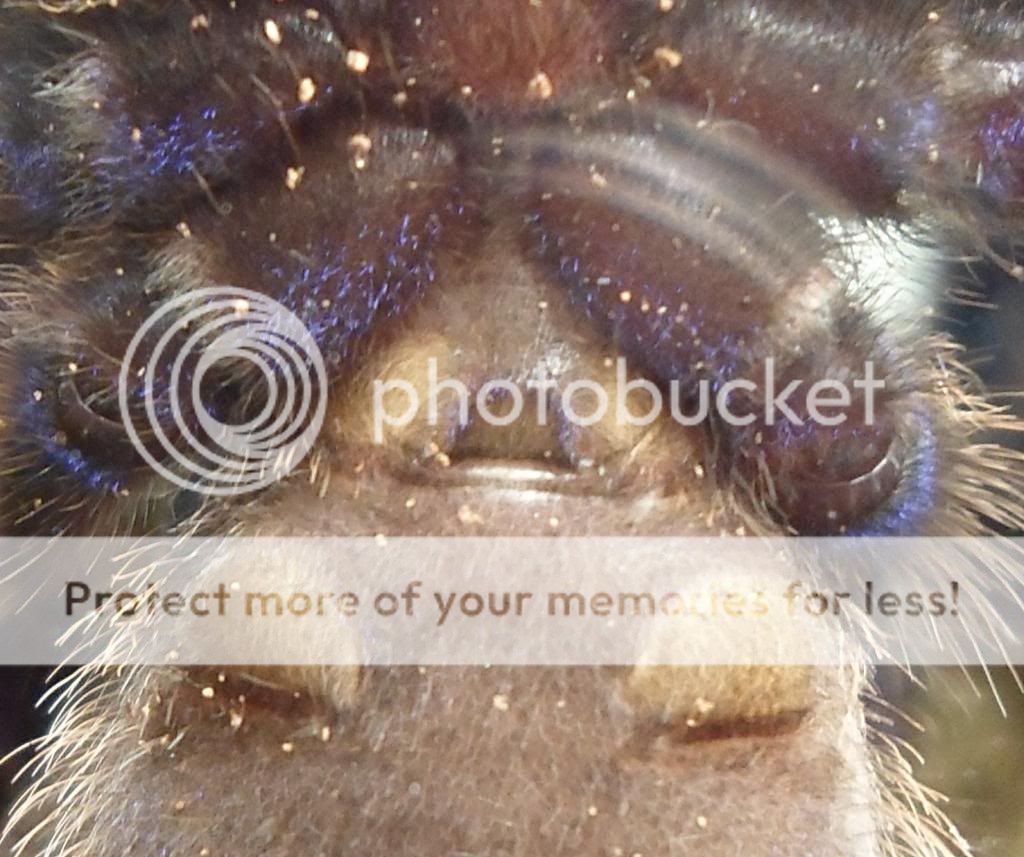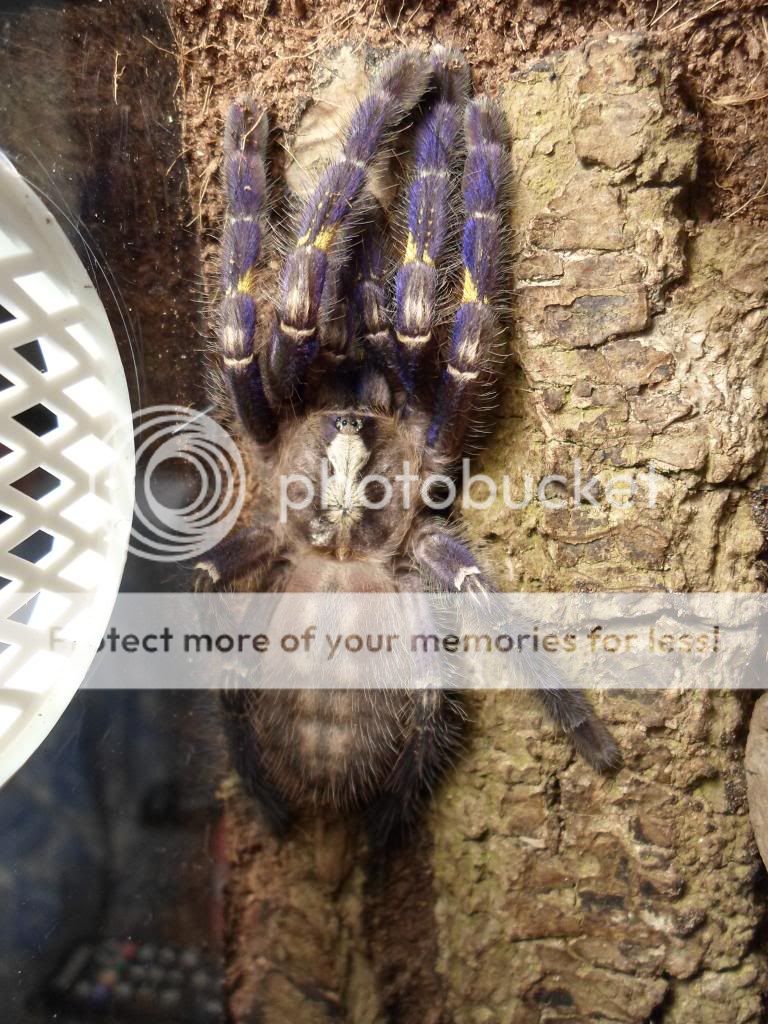All,
I have 3 P metallica all around a simllar size which is around 5-6inch however regarding the sex to each of them,I am not sure as they always seem to destroy the exuvium in the area I need to check. I have checked the palps on all three P Metallicas and none have embolus bulbs at this moment in time.
Is there anyway of telling the difference between Male and female visually as I have heard of different methods off Facebook i.e. admomen patterns exct. is this True? I probably doubt it.
I am pretty sure the only reliable way is to get a good Exuvium but just wondered if there is any other signs that could point me in the right direction.
One of the P Mets molted last week but again destroyed the exuvium, however the ventral side looks different to the others. is there a difference in the ventral sides of MM and A/F or are they the same?
Regards
Craig Toon
I have 3 P metallica all around a simllar size which is around 5-6inch however regarding the sex to each of them,I am not sure as they always seem to destroy the exuvium in the area I need to check. I have checked the palps on all three P Metallicas and none have embolus bulbs at this moment in time.
Is there anyway of telling the difference between Male and female visually as I have heard of different methods off Facebook i.e. admomen patterns exct. is this True? I probably doubt it.
I am pretty sure the only reliable way is to get a good Exuvium but just wondered if there is any other signs that could point me in the right direction.
One of the P Mets molted last week but again destroyed the exuvium, however the ventral side looks different to the others. is there a difference in the ventral sides of MM and A/F or are they the same?
Regards
Craig Toon




Comment